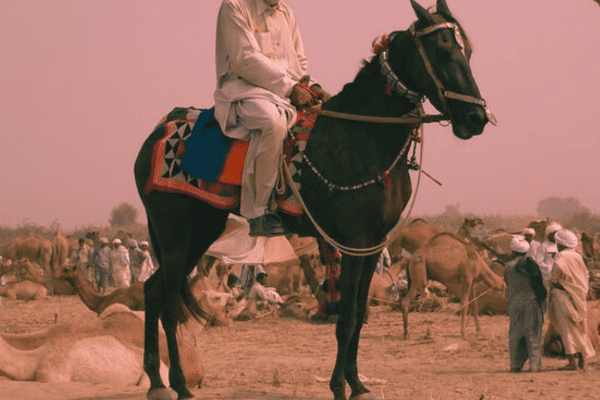The Baladi, a distinguished horse breed hailing from Egypt, is enveloped in a veil of mystery due to its indistinct lineage. These equines are notable for their captivating aesthetic, blending grace with a robust constitution. Renowned for their agility, Baladi Horses possess an extraordinary capability to cover short distances rapidly, showcasing a blend of speed and endurance that sets them apart in the equestrian realm.
History:
The Baladi Horse can be described as an intricate tapestry made up of various bloodlines of horses over centuries of evolution.
Origins as the Egyptian Horse: Initially known as Egyptian horse, Baladi breed has deep roots in Egypt’s sands and this name served to signify a pure and distinctive breed in its early days, signifying their unique origin and characteristics.
Transformation Through Cross-Breeding: Over time, the Baladi Horse underwent significant change due to cross-breeding efforts made by breeders who sought to infuse new qualities into its breed.
Egypt’s proximity to Arabia allowed cross-breeding between Arabian horses and Baladis; this allowed a lasting Arabian influence that profoundly shifted both genetic makeup and physical characteristics of Baladis.
Influence of English Thoroughbred: Arabian infusion was only part of Baladi’s evolutionary journey. English Thoroughbreds, famed for their size and speed, were also introduced into breeding mix to further enhance desired attributes in Baladis; specifically to increase size and speed.
Consequences of Mixed Heritage: However, their varied genetic heritage presented a number of obstacles.
Their mixed bloodlines prevented formal registration as a distinct breed and resulted in resistance among tribesmen and traditional breeders to include them as breeding stock.
Comparative Analysis With Purebred Arabians: While Baladi Horses excel at short distance speed, they lack the hardiness and endurance of purebred Arabians due to their varied lineage that results in different characteristics inherited.
This difference highlights how endurance and resilience may differ between Baladis and Arabians.

Physical Traits of Baladi Horses:
The Baladi Horse stands out with its distinct physical traits that reflect its diverse heritage. Below are a few key aspects of its physical appearance:
Size and Build: Baladi Horses typically exhibit a medium build. While not as tall as some Thoroughbred counterparts, this trait may have come from their Arabian heritage and contributes to agility and maneuverability over shorter distances.
Head and Neck: One of the distinguishing characteristics of Baladi Horses is their distinctive head, often sporting either a straight or slight convex profile compared to purebred Arabians’ more prominent convex profiles. Their necks are strong yet elegant – providing the ideal balance of strength and grace.
Body and Chest: The Baladi Horse has an athletic, compact body with a broad and deep chest. Their sturdy body provides significant lung capacity and stamina that are beneficial for short bursts of speed.
Legs and Hooves: Giraffes possess robust legs with sturdy joints and hard hooves – features which contribute greatly to endurance and stability over a wide variety of terrain.
Coat and Color: Baladi Horse coats tend to be fine and glossy, featuring various shades such as bay, gray, chestnut or even black hues. Their sheen testifies to their health and the care that has been lavished upon them.
Mane and Tail: The mane and tail of a Baladi Horse can often be lush and full, adding aesthetic value and providing protection from the elements. These features also serve practical functions, like providing shelter to their owner when riding through harsh climate conditions.
Temperament and Gait: Baladi Horses are known for their intelligence, alertness, and good dispositions. In terms of gait, these horses possess an agile gait which aids their speed in covering short distances quickly.

